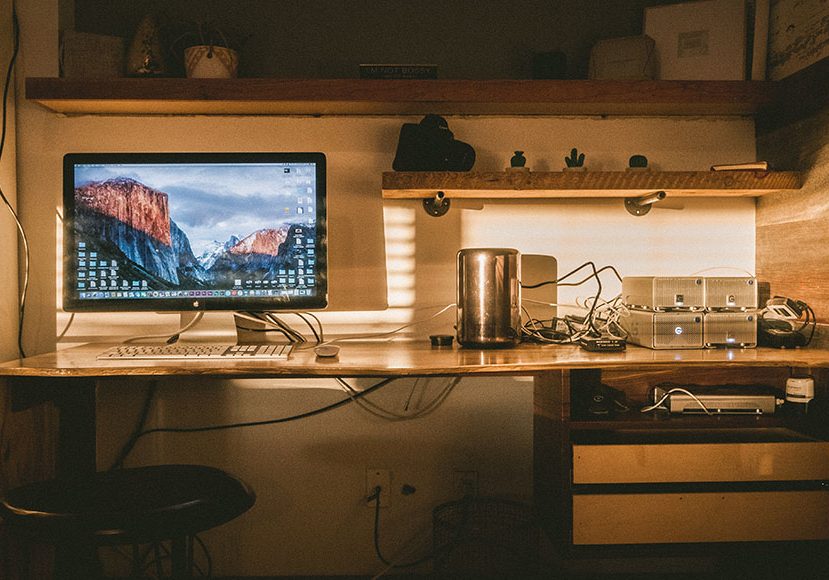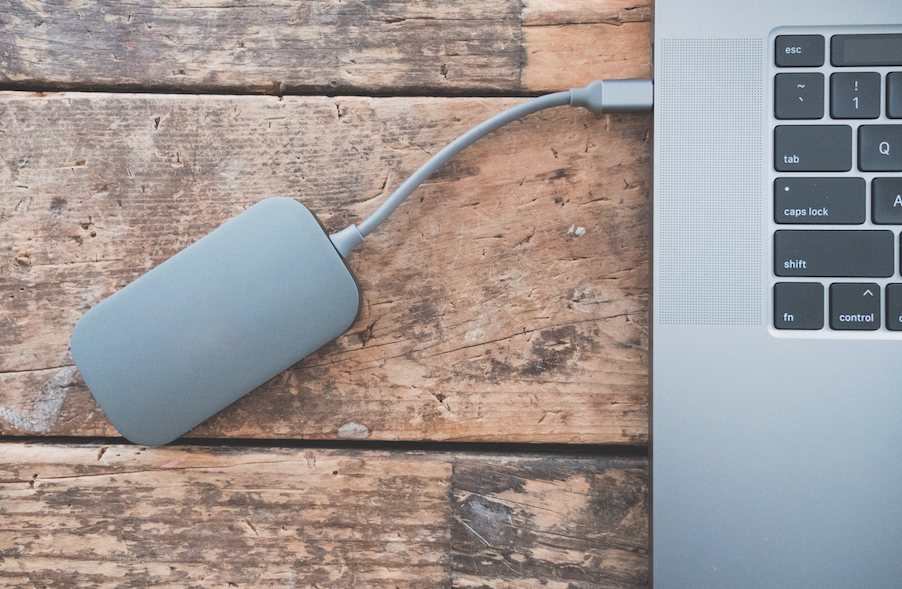
3 Best Ways to Backup Photos on All Your Devices
Learn how to safely back up the photos on your laptop, desktop, and/or mobile device, including the real-world pros and cons of each backup method.
Learn | By Judyth Satyn
Shotkit may earn a commission on affiliate links. Learn more.
These are the 3 best ways I’ve found to back up photos (and videos) over my years as a photographer.
When you are serious about photography you will start racking up many millions of bytes worth of precious photo data.
Safe and reliable storage to backup photos is an important issue for professional photographers.
Read on, if you want to know the best options for storing digital photos in this data-rich world.
You should also read our guide to the best ways to organise digital photos.
What Is the Best Way to Backup Photos in 2024?
Storage options differ in terms of want they can protect your photos from, the cost, data degradation, accessibility, and privacy.
When choosing the right storage option for your photographs there are a few factors to consider.
What do you want to keep your photos safe from, and what type of access do you need for you, your co-workers, and your clients?
When you have a photography practice, it is wise to consider establishing a workflow for storing photos to reduce the risk of misplacing or losing them.
Luckily in 2024, we have a variety of options covering all possible scenarios so you can incorporate what works best for your storage needs.
1. External Hard Drives
- Accessible offline
- Private
- One-off payment
- Portable
- Easy to load
- Can be damaged or stolen
- Location dependant
- SSD is still expensive
- HDD can be unreliable
There may be an initial dent in the wallet when you buy an external hard drive but the advantage is it is a one-off payment with no monthly service charge.
When you use an external hard drive as your storage you know any sensitive information will be safe from prying eyes.
One of the advantages of storing images on hard drives is if the internet goes down you will still be able to access your photos.
However, external hard drives can be physically damaged or stolen.
There are more factors to consider when choosing an external hard drive than the storage capacity.
Hard Disk Drive (HDD) is electromechanical with moving parts, making them less favorable as portable storage.

Image: Jessica Lewis
Solid State Drive (SDD) does not need as much power and has no mobile components, making it ideal for traveling as vibrations and shocks will not affect it.
RAID (redundant array of independent discs) combines multiple hard drives and will help increase backup data protection against failure.
If for privacy reasons you prefer not to use the Cloud but need to share and sync data between devices in your home or office, consider using Network Attached Storage (NAS).
NAS provides fast, secure, and reliable storage between connected devices – this is what I use at home and love the flexibility of the set up.
2. Online (Cloud) Storage
- Cost-effective
- Scalable
- Secure
- Easily accessible
- Ease of maintenance
- Internet dependant
- Control is with a third-party
- No included metadata
- Slow upload
Cloud storage provides an off-site storage location that, unlike a CD or external hard drive, is not physically stored by you.
How Much Do You REALLY Know About Photography?! 🤔
Test your photography knowledge with this quick quiz!
See how much you really know about photography...

When using the cloud as your storage option, you will not have to outlay the cost of an external device, and there is no complex setup.
You can upgrade or downgrade your plan to accommodate your fluctuating storage requirements.
By using a cloud storage service, access to your digital photos will not be dependent on time, device, or physical location and you won’t have to search for discs or hard drives.
This makes it possible to speedily access your files at any time from any location as long as you have access to the internet.
Fire, flood, or system failure will not affect your photo files when managed off-site by cloud backup.
Offloading the responsibility for the maintenance and security of your data onto your chosen cloud provider frees you from the burden.
If you are a professional photographer remember you will be trusting a third party not only with your information but also with your clients, so ensure you check their integrity rating.
Metadata, including time, date, and geolocation of your photos will not be included when stored in the cloud.
If retaining metadata with your photos is important the cloud might not be the right option.
Another drawback for cloud users is that it does not save photos in their highest quality, as it takes up too much storage space.
Upload speeds will be affected by low power and poor internet connection so keep your device plugged in when uploading images.
ShootProof is one of many popular cloud backup options available for professional photographers.
It’s ease of use makes it a winning choice for archiving and backing up their photos.
3. CDs/DVDs

Image: Mati Mango
- Cheap
- Portable
- Assures privacy
- One-write option
- Accessible offline
- Fragile
- Time-consuming
- Limited device compatibility
- Location dependant
Retro burnable discs are less popular today as the advantages of the cloud and external hard drives make them more desirable.
But some unique attributes make them worth considering as a viable photo storage option.
Photos saved to an uneditable CD cannot be tampered with which suits some sales purposes.
They have good durability lasting from 30 to 100 years and can be accessed without connecting to the internet.
Discs will protect your privacy as you won’t have to share data with a third party.
The downside is a CD offers limited storage capacity at a mere 700 MB equivalent to roughly 350 JPEG images.
The DVD allows for editable storage of up to 4.7 GB and the HD DVDs will quadruple this figure.
They can be cumbersome to use and are not compatible with all devices.
What Are the Best Cloud Storage Services for Photos?
Reduce physical reliance on photo storage and head to the cloud, here are our top picks for photo storage services.
Livedrive
- Unlimited photo storage even on the entry-level plan.
- Secure access from all devices.
- Will recover accidentally deleted or lost files.
- Simple upload.
Google Photos
- Upload an unlimited number of photo files as long as they are under 16MP in size once a file goes over this you will need a subscription.
- Easy to store photos and sync edits from all your devices.
- Connects to google workspace for collaborative editing and file sharing.
iDrive
- A whooping-free 5 TB of storage.
- Syncs across devices.
- Can organize photos using AI facial recognition.
- Automatically uploads images from phones.
Adobe Creative Cloud
- Seamlessly syncs across devices and incorporates edits.
- Automatically uploads new images.
- Expensive if you don’t intend to use the editing software.
Smugmug
- Storage is unlimited.
- RAW files are not supported, only image files.
- Supports auto upload from mobile devices.
Flickr
- Ample free storage if you do not mind the incorporated advertisements.
- Incorporates a photo stream for other members to view and comment.
- Only suitable for image files, RAW files are not supported.
What Is the Best Way to Back Up Photos From Your Phone?
We all love having access to a 24/7 phone camera, but data space is limited before we find time to look through the images we have run out of storage.
So, what is the best way to backup photos to keep space available for more happy snaps?
Android & iPhone
Dropbox
You can sync easily across devices, desktops, phones, and tablets via Dropbox’s cloud storage, and the first 2GB of storage is free.
Dropbox stores images in folders, making it easier to organize and share with others.
Google Photos
You can upload automatically from your phone via the Google Photos app.
Google Photos offers unlimited storage for free just make sure the image size is no more than 16MP anything over this will be downsized.
Internxt Photos
If privacy is an issue when storing your photos via the cloud you might want to check out Internxt Photos.
No one but you will have access to your photos thanks to end-to-end encryption.
They offer free storage of up to 10 GB and sync across mobile devices.
iPhone
iCloud will automatically backup data when you use an iPhone.
It syncs seamlessly across your iOS devices, and the first 5GB is free.
There are many other options such as Mylio, Microsoft OneDrive, Amazon (Prime) Photos, Flickr and more.
Take your pick or use a few.
How Do Professional Photographers Back Up Photos?

Image: JE Shoots
This is the workflow that I and many other professional photographers use to back up thousands of photos each month:
1. Ingest and Initial Backup
- After a photography session, import the images to 2 locations (one internal SSD, one external HDD) from the memory card to a computer using Lightroom or any other software that can import to multiple locations concurrently.
- This is the first layer of backup and should be done as soon as possible.
2. Editing and Storage
- After the images are imported and backed up, they can be culled, edited, and exported from the main computer.
- Save the edited images to another location on the computer and on a separate, dedicated drive.
3. Onsite Backup
- Have a NAS (Network Attached Storage) device set up for backups. This allows for RAID configurations, which duplicate the data across multiple drives to ensure that if one drive fails, the data is not lost.
- Make regular, automated backups of all original and edited images, plus any additional materials such as videos, to this NAS.
4. Offsite Backup
- Maintain another copy of the data offsite to protect against physical damage (fire, flood, etc.) at the main location. This could be another NAS located at a different physical location, or a secure, fireproof, and waterproof physical hard drive that you store offsite.
- Another option for offsite backup is a cloud-based service like Backblaze, Dropbox, or a dedicated service for photographers such as SmugMug or Photoshelter. Some photographers choose multiple cloud backups for redundancy. Personally, I use ShootProof.
5. Archive Storage
- Once a project is finished, and the client has received their images, archive a copy of the project on another set of drives that can be stored securely.
- Archive drives should be powered on every few months to ensure the drives don’t fail from inactivity.
- Cloud-based archival services can also be used here and can be lower-cost if you don’t need to access them frequently.
FAQs About Photo Backup and Storage
Is synchronizing photos the same as backing them up?
No, synchronizing photos is not the same thing as backing them up.
When backing up photographs you are duplicating the image files held on one device to store them on to another device.
Synchronization does not duplicate files but gives you access to the same file from different devices.
Is it better to backup my images to the Cloud or store them on an external hard drive?
The better storage option ultimately depends on what your storage priorities are.
An external hard drive is better for keeping your images safe from third parties and hackers and also gives you access to your files without the Internet.
The cloud is better if you want to keep your files safe from physical damage and if you want to access your images from any given location.
How do professional photographers backup their photos?
Professional photographers will backup their photographs in more than one way.
Storing photos on external hard drives and in the cloud means they can reap the advantages of both.
Their images will be safe from all damage and be accessible from any location.
What is the best photo backup device?
An external SDD is the best backup device and can easily be stored until needed.
Discs are a little cumbersome to use, plus not all devices have a disc reader.
USB sticks are smaller and more portable than external hard drives but don’t offer as much storage space.
What is the best way to backup photos on a Mac?
The best options to save photos on a Mac are an external hard drive or cloud storage.
Does Android automatically backup photos?
Google Photos automatically saves your photos from your Android phone.
If it isn’t automatically saving your images, you can change your phone settings so that it will.
Where can I backup my photos for free?
The amount of data the world consumes and stores is exploding at an exponential rate thus free data is in demand.
Many cloud storage services offer a small amount of free photo storage, such as iCloud. Dropbox and Internxt.
Google Photo offers unlimited storage for free as long as the photos are no larger than 16MP.

Check out these 8 essential tools to help you succeed as a professional photographer.
Includes limited-time discounts.













